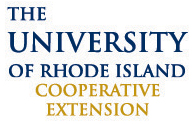New England Greenhouse Floriculture Guide
A Management Guide for Insects, Diseases, Weeds, and Growth Regulators
2021-2022
Leanne Pundt
University of Connecticut
Rosa E. Raudales
University of Connecticut
Cheryl Smith
University of New Hampshire
|
|
||
|
The New England Greenhouse Floriculture Guide: A Management Guide for Insects, Diseases, Weeds, and Growth Regulators is published in fall of even-numbered years by New England Floriculture, Inc. (NEF). Members of NEF's Board of Directors represent commercial floriculture associations of the six New England states plus New York. In conjunction with university Cooperative Extension representatives from these seven states, NEF sponsors the Northeast Greenhouse Conference and Expo in the fall of even-numbered years. For more information about the Conference, go to www.negreenhouse.org This publication is produced in collaboration with the Cooperative Extension organizations of the six New England states: |
||
|
|
|
|
|
|
|
|
© 2020 New England Floriculture, Inc. All rights reserved
Preface
The New England Greenhouse Floriculture Guide is a reference manual for commercial greenhouse growers. It presents information on pest, diseases, and algae management and other production management techniques for floricultural crops grown in greenhouses.
The Guide is a joint effort of faculty and professional staff of the New England land grant universities, and is published with support from New England Floriculture, Inc., sponsor of the biennial Northeast Greenhouse Conference and Expo.
The information in this guide is for educational purposes, and is based on the best information available at the time of printing. All references to commercial products and trade names are for informational purposes only. No endorsement or approval of commercially available products is intended. New England Floriculture, Inc., does not guarantee or warrantee the standard of any referenced product, or imply approval of the product to the exclusion of other products that may be available.
The editors encourage growers to implement an integrated management approach through good cultural practices and biological controls to promote excellent plant health, and use chemical controls only when needed. Sustaining New England's commercial floriculture industry requires sound pest management decisions that protect the environment and promote social acceptance of agriculture.
All pesticides are registered for suggested uses in accordance with federal laws and regulations. Laws and regulations vary among the New England states. Check with your state pesticide regulation office about questions concerning state registration of pesticides (see Appendix II for contact information). The label is the law.
Read and follow all use and safety instructions on product labels. Carefully handle and store pesticides in original containers out of reach of children, pets and livestock. Dispose of empty containers immediately in a safe manner and place.
FeedbackWe welcome your feedback. Please send comments and suggestions about the Guide's editor, Dr. Rosa E. Raudales (rosa.raudales@uconn.edu, or 860 486 6043). Thank you.
Contributors
Managing Editors
Leanne Pundt and Rosa E. Raudales
University of Connecticut
Section Editors
Section A: General Pesticide Information
Rosa E. Raudales, Greenhouse Extension Specialist—University of Connecticut
Section B: Insects and Mites
Leanne Pundt, Extension Educator—University of Connecticut
Line drawings: Insects—NCCES and USDA.
Section C: Plant Diseases
Cheryl Smith, Extension Plant Health Specialist, University of New Hampshire
Leanne Pundt, Extension Educator—University of Connecticut
Section D: Plant Grower Regulators
Rosa E. Raudales, Greenhouse Specialist, University of Connecticut
Section E: Weeds and Algae
Leanne Pundt, Extension Educator—Commercial Horticulture, University of Connecticut
Variable liverwort images courtesy of Karen's Whimsy (karenswhimsy.com).
Additional Contributors
"Protecting Bees and other Pollinators from Pesticides" in Section A:
Revised by Dr. Richard Cowles, The Connecticut Agricultural Experiment Station.
"Organic Certification Q & As" in Section A:
Don Franczyk, Baystate Organic Certifiers, 683 River Street, Winchendon MA 01475, www.baystateorganic.org
"Table B-5 and IPM" in Section B:
Dr. Raymond Cloyd, Kansas State University, contributed to this table.
"Horizontal Air Flow" in Section C:
John W. Bartok, Jr., Extension Professor Emeritus (Agricultural Engineer), University of Connecticut.
"Weed Management" in Section E:
Reviewed by Randall Prostak, UMass Extension.
"First Aid for Pesticide Poisoning" in Appendix I:
This information is reproduced with permission from the Northeast Pesticide Applicator Training Core Manual (3rd ed.), 2012, produced by the Cornell University, Pesticide Management Education Program; and National Pesticide Applicator Certification Core Manual, published by the National Association of State Departments of Agriculure Research Foundation (NASDARF) for the U.S. Environmental Prtection Agency Office of Pesticide Programs.
|
We are indebted to those who contributed material for this guide in previous editions. We thank: Alan Eaton, Alan Gotlieb, Allen C. Botacchi, Andrew Senesac, Anne Dorrance, Bernard Sangalli, Bess Dicklow, Charles Williams, Colin D. Steward, Dave Schoreder, David Wallace, Daniel Gilrein, Gary Deziel, Gordon Nielsen, Grace O'Keefe, Jeff Jenkins, Jim Dill, John Bartok, Joseph Neal, Kimberly Stoner, Karen Rane, Mark Hoodle, Leonard Perry, Lois Berg Stack, Mary A. McCormick, Pat Vittum, Paul Lopes, Raymond Cloyd, Richard McAvoy, Richard Shaw, Robert Luczai, Robert Stamps, Robert Wick, Ron Mack, Roy Van Diresche, Scott Pfister, Stan Swier, Suzanne Lyon, and Tina Smith (Names listed in alphabetical order by first name) |





